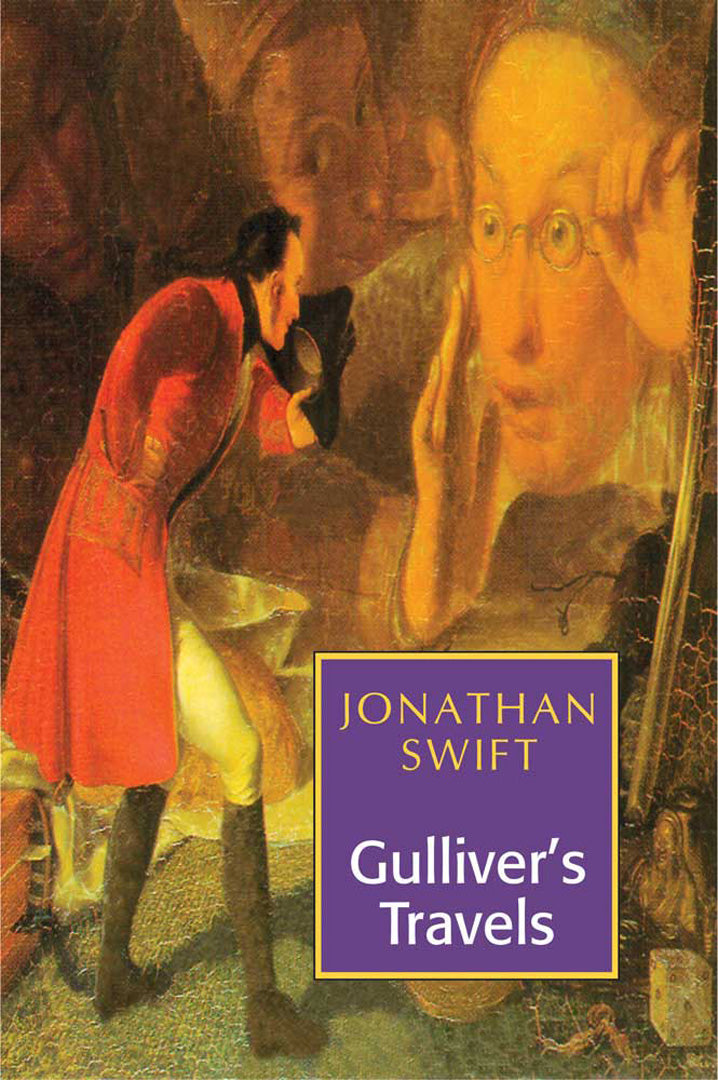Gulliver'S Travels
Gulliver'S Travels
Jonathan Swift
Couldn't load pickup availability
Share

More Information
- ISBN13:
- Publisher: Atlantic Publishers and Distributors (P) Ltd
- Publisher Imprint: Peacock Books
- Publication Date:
- Pages: 302
- Binding:
- Item Weight:
- Original Price:
About The Book
Gulliver's Travels, first published in 1726, was an immediate success and was read 'from the Cabinet - council to the Nursery' (Gay). It continues to appeal to readers of all ages, both as a travel book and as a powerful satire. George Orwell rates it among the six most indispensable books in world literature.
Gulliver travels to four extraordinary places. In the first, people are five or six inches tall; in the second, sixty or seventy feet; the third is a kind of satellite inhabited by absurdly impractical scientists; and the fourth is a country governed by horses who treat humans as filthy animals.
Jonathan Swift uses the imaginary voyage as an instrument for his satire on mankind, reflecting on morals, social habits, political events and ideals, and exposing hypocrisy and cant. The fantastically inventive fictional world he creates provides a critique of human nature and its institutions. Jonathan Swift's attack on the futility of science which is not applied to human betterment in its widest sense, is relevant to today's post-industrial culture.
About The Author
Jonathan Swift was born in Dublin, Ireland, on November 30, 1667 after the death of his father, who was also called Jonathan Swift. His mother, Abigail, came from Leicester. He was grandson of Thomas Swift, the Royalist vicar of Goodrich. He was a cousin of Dryden. His mother returned to her native Leicestershire when he was three, and, therefore, from an early age he was looked after by his uncle Godwin, who sent him to Kilkenny School in 1673, where Congreve was a fellow pupil. In April 1682 he entered Trinity College, Dublin, but his academic career was not distinguished and he only managed to get his degree by ‘special grace’. Swift seems in retrospect to have regarded the education he received as second-rate, though this is perhaps merely one of several instances of resentment on his part during the course of a long and disappointing life which he saw as characterized by the ingratitude of others.
In 1689 Swift entered the household of Sir William Temple as his secretary, and settled at Moor Park, Surrey. In July 1692, having already completed most of the required work, he took an M.A. from Hart Hall, Oxford, a qualification which would enable him to enter the Church. Swift remained at Moor Park until May 1684, reading voraciously through Temple’s library. He wrote pindarics, one of which, printed in the Athenian Mercury (1692), provoked, according to Dr. Johnson, Dryden’s remark, ‘Cousin Swift, you will never be a poet’. Annoyed at his position of dependence, and indignant at Temple’s delay in getting him promotion, he returned to Ireland, was ordained (1694), and received the small prebend of Kilroot. He returned to Temple at Moor Park in 1696, where he edited Temple’s correspondence, and in 1697 wrote The Battle of the Books, which was published in 1704 together with A Tale of a Tub, his vehement and comprehensive satire on corruptions in religion and learning. Temple died in 1699 and Swift returned to Ireland once more where he was given a prebend in St. Patrick’s, Dublin of which he was to become dean in 1713, and the living of Laracor. In 1726 he published his best-known book, Gulliver’s Travels, and this was the only piece of writing for which he was ever paid. He became a national hero for defending Ireland against the inequities of the English Whigs.
It is not certain whether Swift ever married in a formal way, but he had intimate relations with Esther ‘Stella’ Johnson, whom he met through Temple at Moor Park, and from 1708 with Esther Vanhomrigh who is said to have died as a result of his final break with her in 1723. ‘Stella’ died in 1728.
Jonathan Swift died at the age of seventy-seven on October 19, 1745. His body was interred in St. Patrick’s Cathedral.

